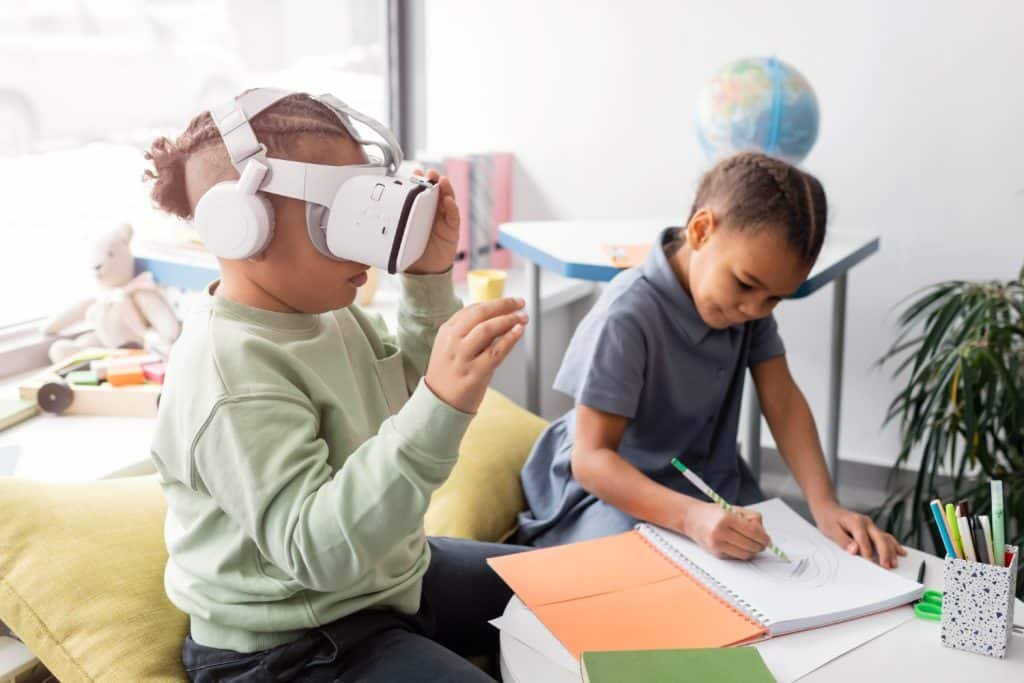Unlocking the Future of Education: Virtual Reality in Classroom Learning
Hey there, fellow learners! Imagine stepping into a classroom where the world is your oyster, history comes to life, and math problems become exciting. Well, guess what? That dream is now a reality with virtual reality (VR) technology!
Let’s dive into the immersive world of VR in classroom learning. Picture this: instead of staring at a dusty old textbook, you’re transported to ancient Egypt, walking among the pyramids and witnessing history unfold. That’s the power of VR – it turns learning into a thrilling journey, sparking curiosity and imagination like never before.

But VR isn’t just about escapism; it’s about engagement. Studies have shown that students are more attentive and retain information better when learning in VR. Why? Because it’s hands-on, interactive, and, let’s face it, a lot of fun! Instead of passively absorbing information, students become active participants in their education, exploring concepts in a natural and intuitive way.
Think of VR as a magic portal that opens up endless possibilities for learning. Whether you’re studying biology, geography, or even literature, VR can bring abstract concepts to life in vivid detail. Suddenly, complex ideas become tangible, making them easier to understand and remember.
However, the most exciting aspect of VR in classroom learning is its potential to level the playing field. In a traditional classroom, students with different learning styles and abilities need help keeping up. But in VR, everyone can learn at their own pace, in their way. Whether you’re a visual learner, a kinesthetic learner, or somewhere in between, VR provides a personalized learning experience that caters to your unique needs.
How does VR work in the classroom? It’s simpler than you might think. All you need is a VR headset and some content – whether it’s a virtual field trip, a 3D solar system model, or a simulated chemistry lab. With the right tools and resources, teachers can transform their classrooms into immersive learning environments that inspire curiosity and ignite a passion for knowledge.
But like any tool, VR is only as effective as the hands that wield it. Educators must receive proper training and support in integrating VR into their teaching practices. With the appropriate guidance, teachers can harness the full potential of VR to create unforgettable learning experiences that leave a lasting impact on their students.
In conclusion, virtual reality is not just a fancy gadget; it’s a powerful tool for revolutionizing education. From engaging lessons to personalized learning experiences, VR has the potential to transform the way we teach and learn. So, what are you waiting for? Dive into the world of VR and unlock a future where learning knows no bounds, only endless possibilities.
Ready to embark on your VR journey? Head over to Magque and discover a world of immersive learning experiences waiting for you!
Read Also:
The Rise of Microcredentials and Online Badges
E-learning Platforms Leveraging AI for Personalized Learning